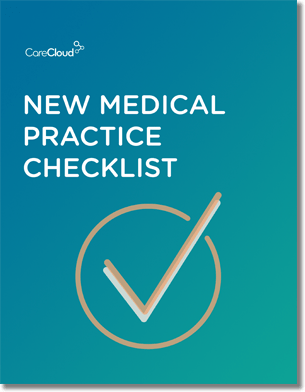There is always a bit of mystery behind a new Apple release. Each one is conveniently close to a major technology conference the company notoriously does not attend – CES in the new iPad’s case – and engulfed in rumors and tech insider talk. Engadget and TechCrunch go nuts and old media sources, well, also go nuts.
Whether it’s Steve Jobs or Tim Cook, an Apple release event is as treasurable as the company’s packaging – each Apple product is like a present you can’t wait to open. But will the new iPad be a gift to healthcare?
Hot off the heels of a University of Chicago internal medicine iPad study making the media rounds over the last few days, we review seven features of the newest Apple release that could influence healthcare in significant ways.
Processing Power
The new quad-core, A5X processor enables faster-running apps, screen sharing, and ease of use. The new iPad also offers a gigabyte of RAM, which greatly enhances multitasking and remote virtual apps like OnLive.
Also, this kind of processing power can handle improved graphics, which helps improve 3-dimensional modeling in apps such as the newest version of Shoulder Pro.
Retina Display
While on the topic of graphics, the iPad’s new retina display boasts a 9.7” screen with a resolution of 2048 x 1536 that will appeal to practices and hospitals across the country.
Physicians, who statistically are already iPad devotees, will love reviewing patients’ digital information on the device. Oh, and then there are radiologists, who will obviously benefit immensely from this kind of mobile resolution.
Faster Internet Connection
Remember the buzz circling Verizon’s 4G LTE at the 2011 Consumer Electronics Show? The iPad is built for that kind of speed on both Verizon and AT&T.
This is obviously a big deal for telemedicine and mHealth, which could benefit from the lack of service interruptions during anything from a routine house call to a virtual examination.
Bluetooth
Since we’re discussing connections, the third-generation iPad is the first tablet to support Bluetooth Smart Ready technology, meaning it can connect with the latest Bluetooth-ready medical devices.
Bluetooth Smart Ready is low-energy technology with increased battery efficiency that will allow patients to transmit information from fitness sensors or heart-rate monitors to the iPad, which will, in turn, convey this vital data to health platforms or their doctors via telemedical applications.
Camera
What are the potential issues associated with a telemedical video conference between a physician and his or her patient? Slow connection speeds and poor video quality. While the faster connection and retina display was covered above, the new iPad’s front-facing camera has incredible potential to help the healthcare industry.
This enhanced, five-megapixel camera is similar to the one on the iPhone 4S and has the ability to record HD 1080p video to offer increased resolution in a telehealth scenario.
Dictation
Imagine how Dragon or M*Modal would run on the new iPad. Now picture an iPad that lets you dictate without a need for either application.
The new iPad has included a keyboard button that allows for one-touch voice recording to the left of the space bar. This can simplify the dictation of patient notes or entering information into EHRs. Data entry is a cinch, and it’s only a matter of time before apps rectify any issues the device may have with complex medical terminology.
Apps
Naturally, the enhanced resolution, speed, camera, and voice recognition technology will also simplify the use of apps.
The App Store has included a section for healthcare, so it’s only a matter of time before a person or organization that can aggregate choices and deliver them to doctors and hospitals streamlines the popularity of medical apps.
The announcement of the new Apple iPad has the potential to cement the company’s position in the healthcare industry by becoming the healthcare provider and developer’s preferred mobile system of choice. It’s time to see how the iPad will improve workflows, collect patient data, and improve the quality of care.

Do you know what you need when setting up a new medical practice?



